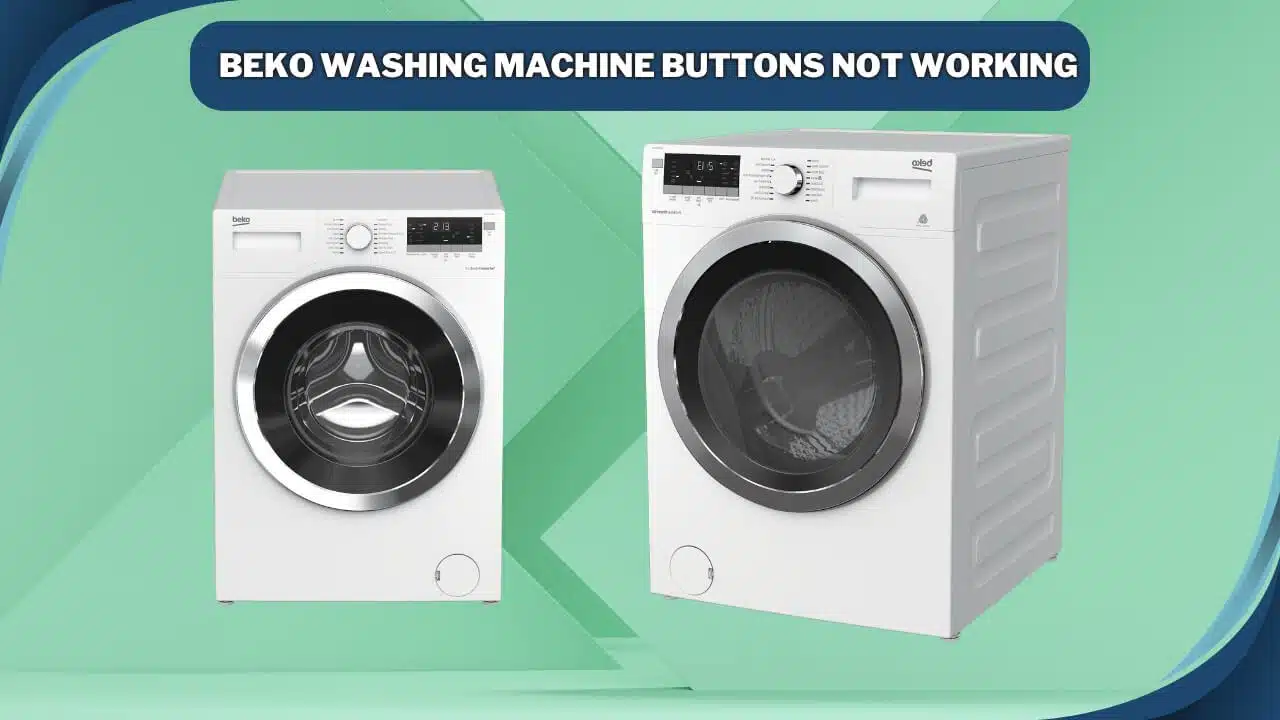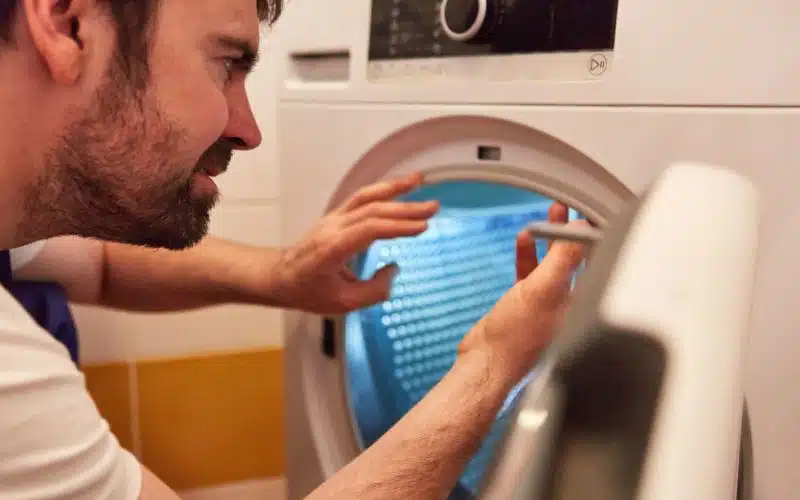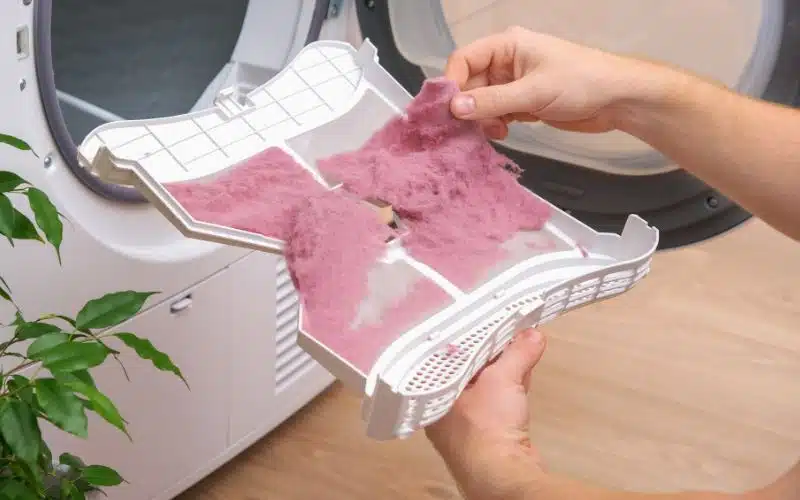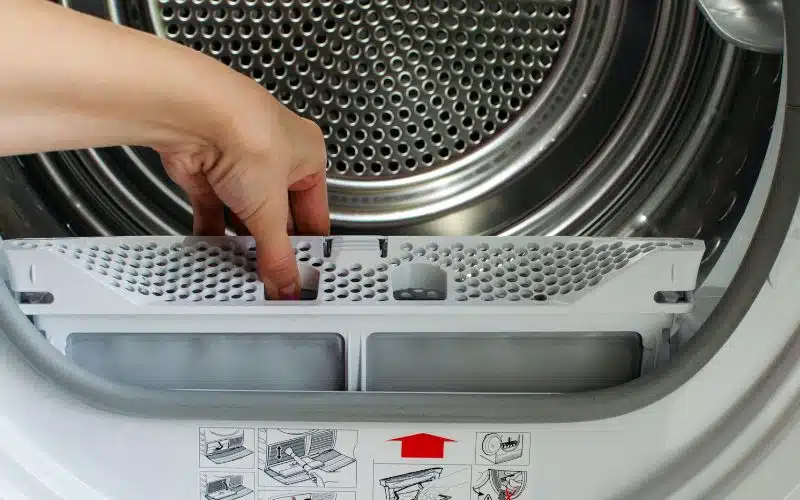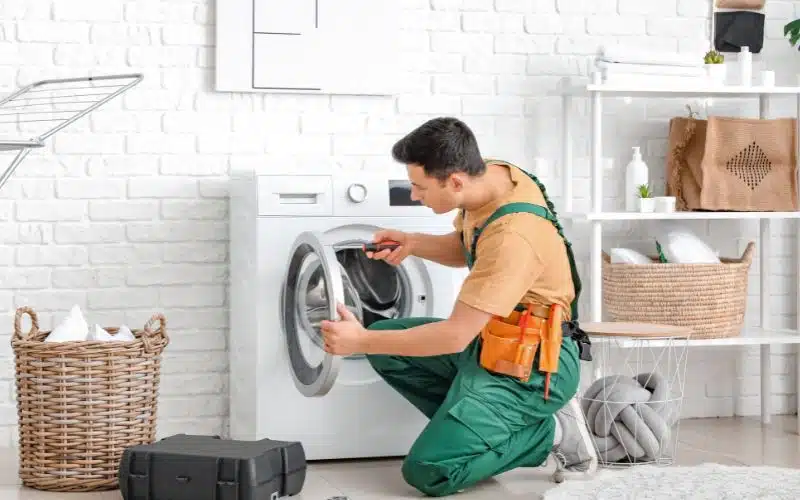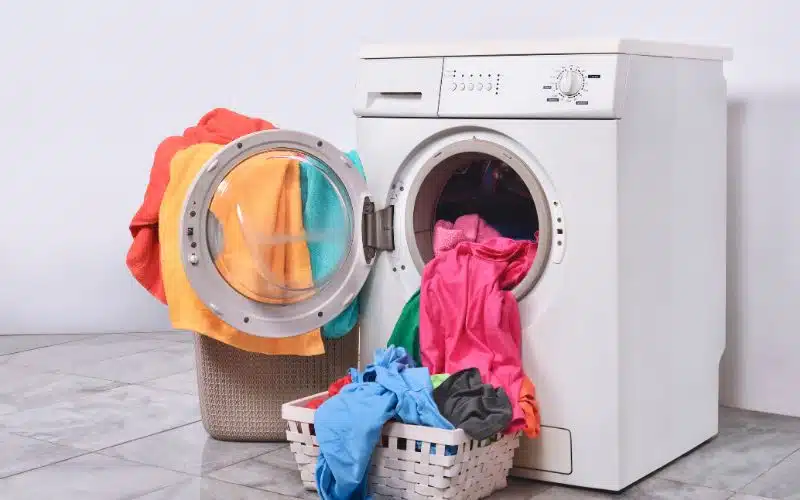Surge protectors are like special shields for your washer and dryer. They stop too much electricity from hurting these machines. This article tells you why these shields are super important to keep your washer and dryer safe and working right. Let’s learn about how these cool helpers keep our laundry day heroes safe!
Ensure the safety and longevity of your washer and dryer by using a robust surge protector specifically designed for heavy-duty appliances. Avoid generic protectors as they may increase risks of fire, tripping, and electrical hazards. Protecting your appliances from power surges, especially during storms, is crucial to prevent potential damage and costly repairs.
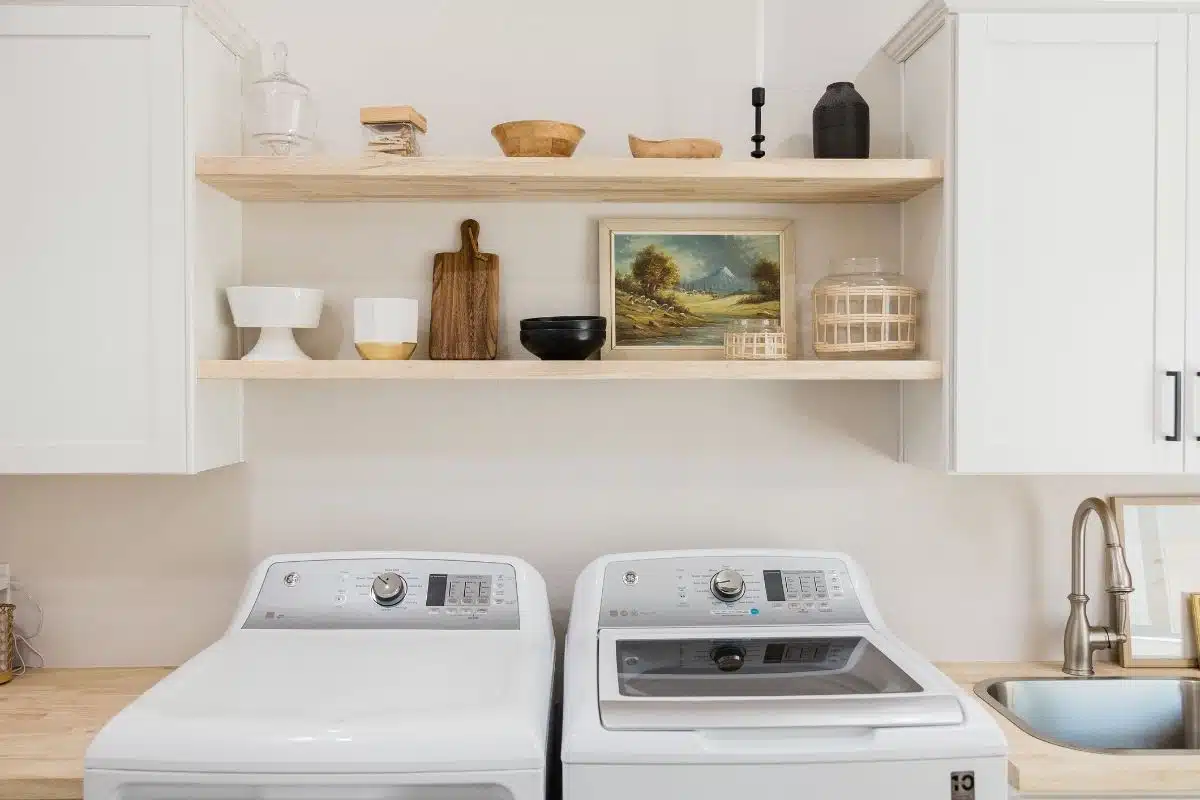
Should I plug my Washer and Dryer into a Surge Protector?
Understand the risks of surge protectors for appliances like washers and dryers. Surge protectors guard against voltage spikes. However, not all are fit for big appliances.
- Washer and Dryer Safety:
- Risk of fire outbreaks.
- Potential for frequent tripping.
- Electrical Concerns:
- Surge protectors can fail with high-power devices.
- Inadequate protectors increase electrocution risks.
Your washer and dryer are sophisticated and require proper care. Connecting them to a surge protector that can’t handle their power needs might be hazardous.
Instead, invest in robust protection designed for such heavy-duty appliances. This guards against electrical issues while ensuring your safety and the longevity of your appliances.
Can a Power Surge Damage a Washer and Dryer?
A power surge is a sudden increase in electricity that can happen at home.
This extra voltage can come from outside, like from lightning strikes, or from something inside, such as when you turn on a heavy appliance.
These surges can be bad news for your washer and dryer.
- Electrical Surges: These can last just milliseconds but still cause harm.
- Types of Surges: Voltage spikes are quick and might not damage right away, but major power surges pack a punch. They can last a bit longer and have the power to melt wires.
Voltage spikes are sneaky; they might not break anything at first. But if they keep happening, they can add up and lead to big problems, like circuitry getting fried or even a house fire.
Did You Know?
- Frequency of Power Surges: Your home could experience a power surge three times a month.
- Lightning Impact: A lightning strike can send a dangerous surge through your home’s wiring.
Your washer and dryer use a lot of electricity and have parts like motors and circuit boards.
These parts don’t mix well with unexpected power jolts. If a big storm is brewing, that’s a sign to be extra careful because lightning could strike and send a surge right to your laundry room.
Protecting Your Appliances:
- Use a surge protector, a device that guards against sudden spikes in voltage.
- Make it a point to get protection for your whole house, one that can handle lightning hits.
Electric Line Placement: Homes at the end of electric lines might face more risks. The surges travel along the wires and can hit your appliances.
When you plug in your washer and dryer, make sure you’re not overloading the outlet. And always check that your surge protector can handle heavy machines. Otherwise, it’s like not having protection at all.
Pro Tip: Skip connecting both your washer and dryer to the same protector. This could be just as bad as a surge from a storm. If a surge strikes, the repair costs can be high, so a little precaution goes a long way.
Always be proactive and protect your appliances. A strong surge protector is an investment that could save your washer and dryer from a surprise electrical storm inside your walls.
Do Appliances have Built-in Surge Protectors?
While some machines might incorporate surge protection, most appliances and electronics, like microwaves or those connecting to the internet, don’t have this feature built-in.
Typically, surge protectors are separate devices that safeguard your appliances. These devices act as a buffer between the power outlet and your appliance’s power cable.
You should know that a surge protector is not the same as an extension cord even though it might look similar.
It’s specifically designed to protect against electrical surges. A surge protector contains a critical component, a small piece of a circuit, that guards against unexpected spikes in voltage.
Your power strip may come with this surge protection since it serves numerous electrical functions.
For instance, a power strip usually has a circuit breaker that manages any overload or prevents a short circuit for the appliances plugged into it.
What are Surge Protectors Good For?
Safeguarding Our Electronic Devices from Power Surge and Spike
Your electronic devices can be harmed by unexpected power surges and spikes. These can come from lightning strikes, power grid issues, or sudden power outages.
A surge protector is key in protecting your devices by directing harmful surges away. It’s like a guard, standing watch over your valuable electronics.
- Joule Rating: Measures a surge protector’s capacity to shield your devices. Higher ratings mean better protection.
- Clamping Voltage: Indicates the voltage level that triggers the surge protector to redirect excess electricity.
- Let-Through Voltage: The amount of electricity that gets through to your devices. Lower is better for their safety.
This careful management of electricity helps keep your tech safe. It extends the life of gadgets like your computer and TV.
Providing Ample Space for Connecting More Devices
Surge protectors offer you the convenience of connecting multiple devices to one outlet.
This not only helps manage device charging but also keeps your area tidy. Overloading is a no-go, though.
That could pose a risk to the surge protector and your devices.
- Capacity: Ensure the total amperage of your devices doesn’t exceed the surge protector’s rating.
- Types of surge protectors to consider include:
- For gaming and computers: Look for models with enough space and appropriate joule ratings.
- For office or kitchen use: Opt for surge protectors with USB ports to charge phones and tablets.
Be mindful that the voltage of all plugged-in electronics should not surpass the surge protector’s limit.
A standard unit could handle 6000 volts, while whole-house surge protectors can manage up to 20000 volts. This high tolerance means more devices are connected without worry.
